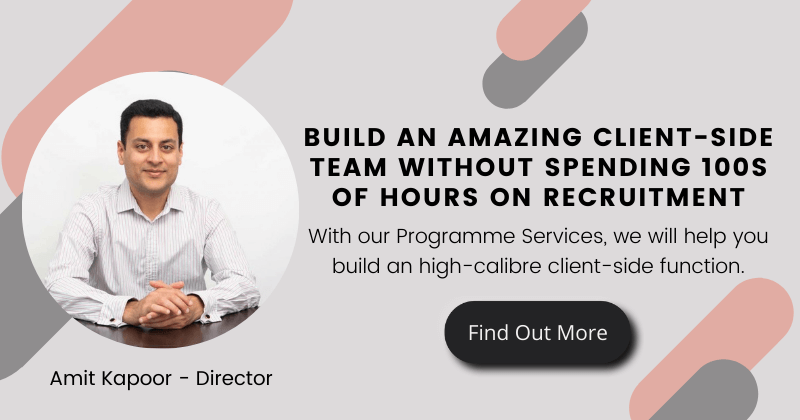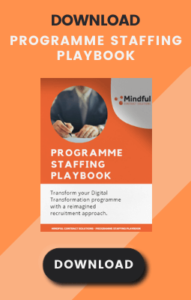Picture this scenario. You’ve just offered your preferred contractor a job (which they’ve duly accepted) after investing your time in reviewing their CV and interviewing them.
You’ve even rejected a few other suitable candidates as this candidate was so great. A job well done and pats on the back to the recruitment team.
However, just before their start date, the candidate tells you they have found a different role and won’t be joining your organisation. 🤬 🤬 🤬
Let’s be honest, nothing could hurt more than losing a candidate after you have invested time in reviewing their CV, interviewing them, and rejecting others.
Therefore, it is probably best that this scenario is avoided!
With this in mind, in this blog post, we will explore how you can lower the risk of your contractors jumping ship before their start date.
What are the consequences of losing contractors?
Have you ever lost a contractor before their start date? In our experience, it is quite a common problem faced by organisations.
The consequences of losing a contractor are profound and includes things like…
1) Wasted time
From chasing your agency, reviewing piles of CVs, to interviewing several candidates, programme staffing is time consuming. When recruiting role-by-role, 10+ hours per role is not out of the norm.
For example, for our leading Central Government client, the numbers worked like this:
- Building a Contingent Labour case – 2 hours
- Presenting the case to the external resources Governance Board – 1 hour
- Briefing in-house recruitment channel – 0.5 hours
- Reviewing CVs – 1.5 hours
- Interviewing candidates – 4 hours
Time is precious during the early stages of a digital transformation programme, so wasting a significant proportion of it on a failed recruitment is to be avoided.
2) Wasted money
If you have wasted 10+ hours on a failed recruitment, this can also be equated to a considerable amount of wasted money. The opportunity cost of this wasted 10+ hours is 10+ hours not being spent on programme delivery which is arguably more important in the early months of a digital transformation programme.
There is a conflict of interest at play in the early stages of a digital transformation programme between Programme Staffing and Programme Delivery. This is something we call the Programme Staffing Paradox.
You can find out more about the Programme Staffing Paradox in our blog article, 5 Strategies To Transform Your Programme Staffing Approach.
3) Losing good candidates
By the time your preferred contractor has accepted the role, you will have already rejected several other candidates who were probably well-suited for the role. However, it’s not likely that you can re-interview them (with the view of hiring them) if your chosen candidate does leave your organisation.
Once rejected, a candidate is unlikely to want to be re-interviewed by your organisation and in any case, they are likely to have found another job.
What is the result?
All these issues will result in a delayed programme start date which is likely to have lots of knock-on consequences. Achieving positive outcomes for digital programmes is already tricky, with research suggesting that 70% of such programmes fall short of their objectives – so the odds must not be slashed any further. It is therefore imperative that candidates are not lost before they have been fully onboarded.

How to Stop Losing Contractors Before Their Start Date
There are actually a lot of reasons why contractors can be lost before their start date. Below, we will explore 4 reasons why contractors might leave during the onboarding process, and also how you can reduce the risk of it happening.
1) Slow onboarding
Onboarding in organisations has been traditionally slow and it can take weeks for a new starter to begin Day 1. Of course, you need to make sure that proper checks are completed and the correct paper work is signed but it needs to be completed quickly and efficiently.
A slow onboarding process puts your organisation in a very vulnerable position. The longer you take to onboard, there is higher risk of the candidate dropping out because the candidate can’t declare themselves as unavailable to the job market. Contractors will likely have applied for multiple roles, and the best ones will have a multitude of (potentially better) offers.
How to speed up onboarding?
The admin associated with onboarding can be sped up through the use of technology. For example, technologies such as DocuSign provide a fast and simple way for formal documents and contracts to be completed.
Online documents can be pre-filled, whilst places where a candidate needs to sign, can be marked in yellow to help speed up the onboarding process.
2) Campaigning too early
Campaigning early may sound great but in practice it is unhelpful as it increases the length of the onboarding process. If there is a long gap between a contractor accepting an offer and then starting a role, there is ample time for them to search for better job offers. For instance, over 1 month a candidate may apply for and then receive 4/5 better offers.
Furthermore, offering a role early on to contractor can also improve their market attractability, so they’ll be more likely to find a better offer. We’ll talk about this in more detail later on.
What should you do instead?
We aren’t suggesting that you campaign at the very last minute as this is bad for many reasons. However, it does reduce the likelihood that your candidate will find better job offers.
In our experience, it is best to have a happy medium and campaign a couple of weeks before your desired start date, as long as your onboarding processes won’t hold up matters. In this scenario, the organisation isn’t rushing around at the last minute trying to find a candidate but also the hiring isn’t too far away from the desired start date so the contractor can start almost immediately and thus, is less likely to leave for a better offer.
3) Poor offer
When your offer is low, the candidate may have grudgingly participated in your campaign in the absence of anything better. Consequently, as soon as a better offer comes in they are likely to jump ship right away.
But if your offer if isn’t in line with good industry practice who can blame them? Contractors deserve a pay grade and non-monetary benefits that are suited to their experience level and quality. It is also important to remember that the best contractors will always have an available pool of job offers which they can accept.
How can you create a good offer?
To reduce the likelihood of dropouts, organisations should create an excellent value proposition. This is the reason why, from a candidate’s point of view, working for you is better than working for others. For example, you could change your compensation models. If you can structure the payment profile to be on outcomes, and the contract as outside-IR35, you are likely to attract a much wider pool of candidates.
A great value proposition will stand you head and shoulders above the competition. As YOUR organisation is the only one they’ll want to choose, it will help lessen the likelihood of dropouts.
You can find out more about creating a great value proposition in our blog article, High Volume Recruitment for Digital Programmes – How to Get it Right.
4) Candidate marketability
When a candidate has accepted a job offer you may think they have some degree of loyalty to your organisation. However, it can actually shift the power-dynamic in their favour.
There is a certain attractiveness to other employers if candidates can say that they have another offer they are considering. This signals social proof, as if another employer thinks this candidate is good then they probably are. For instance, would you rather hire a contractor who has received a number of alternative jobs offers, or one who hasn’t received any?
A candidate may also be able to negotiate a better offer because they have already been offered a benchmark offer by your organisation.
Finally, candidates who may be nervous about interviews otherwise, tend to be a lot more self-assured of their skills and capabilities in the period after an offer. Not surprisingly, they interview better and exude more confidence leading to more offers their way.
What can you do about this?
You can reduce a candidate’s marketability (we mean this in a nice way!) by employing the tactics we have mentioned. Firstly, through speeding up the onboarding process and campaigning close to the desired start date, a candidate will be less likely to receive job offers in this short period of time.
Furthermore, by creating the best value proposition on the market, your candidate won’t want to work for a competing organisation.
You could even sign an NDA with your contractor so they can’t reveal that they have received a job offer with your organisation.
What are your next steps?
Nothing could hurt more than losing a candidate after you have invested time in reviewing their CV, interviewing them and rejecting others.
However, by understanding why a candidate has decided to leave, organisations can reduce the likelihood of this situation occurring.
With our experience of working on transformation programmes, we understand intuitively the problems your organisation is going through.
And as programme practitioners ourselves, we are familiar with how contractors can think, feel and act on receipt of an offer. We can therefore help pre-empt candidate flight, and help you take preventive measures.
Check out our Programme Services to find out more.





